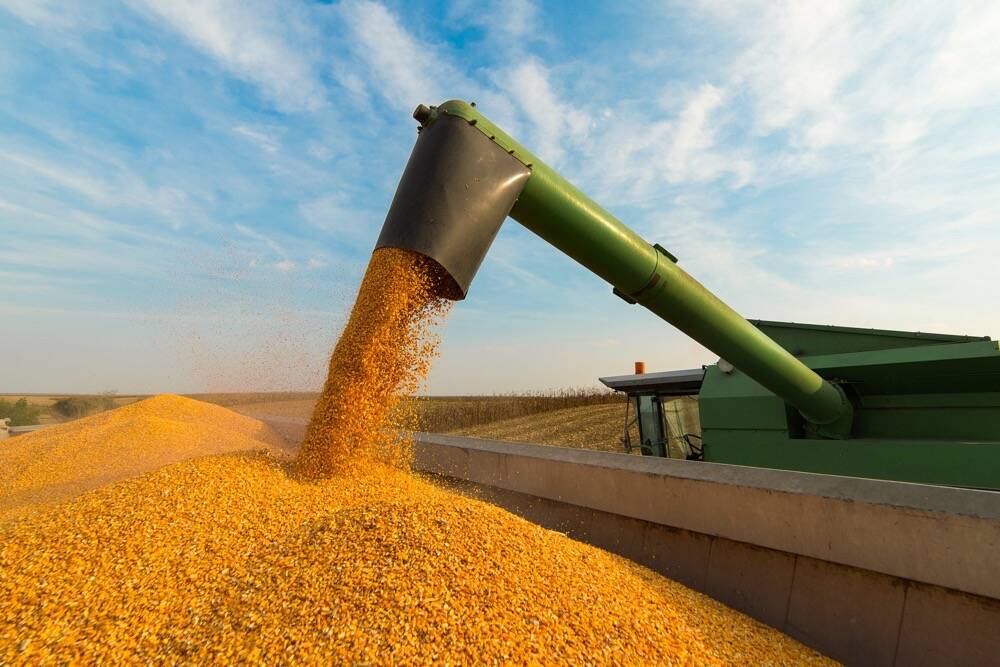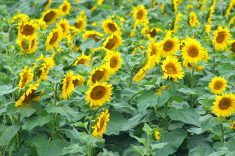The harvest of Ontario’s winter wheat crop is expected to begin a bit sooner than normal, given that the crop broke dormancy earlier than usual this spring, and amid generally favourable weather conditions since.
"The winter wheat harvest in Ontario generally never starts in June, but there is a good chance the combines will be rolling during the last few days of June," said Peter Johnson, a cereals specialist for the Ontario Ministry of Agriculture, Food and Rural Affairs at Guelph .
The development of the province’s winter wheat crop was roughly a week to 10 days ahead of normal, he said.
Read Also

USDA sees tighter U.S. corn stocks, soybeans and wheat unchanged
The USDA is forecasting tighter U.S. corn ending stocks for 2025/26 due to increased exports. The supply/demand balance sheets for soybeans and wheat were unchanged.
Johnson classified the Ontario winter wheat crop as "looking good, but not outstanding."
At the end of May, there was a long period of hot and dry weather in a number of the province’s winter wheat areas during the crop’s critical pollination period.
"Normally, the crop likes to see some precipitation and less heat during that time frame," he said.
The end result will be that both yields and the straw content will be reduced, Johnson said, noting that there is a serious straw shortage in the province.
"During the grainfill stage of development is the most critical period for filling wheat heads, so I don’t want to sound all doom and gloom, but there were certainly less than ideal conditions during the pollination period," he said.
In terms of disease, Johnson said there were few issues for winter wheat. However, the big problem was the infestation of the crop with armyworms.
Spraying
"The province has a real armyworm breakout across a wide part of the winter wheat-growing region," he said, noting that typically armyworm infestations have only one or two hot spots in Ontario every year.
However, this year "we probably have as much as a third of, or maybe half of the wheat growing area that (has) armyworm infestations at significant levels," Johnson said.
"I would say that (in) 90 per cent of the wheat fields where the armyworm infestation is high, spraying is occurring," he said.
The armyworm eats the leaves off the plant, Johnson said, and if that’s all injury the pest does, than the yield hit is 10-15 per cent.
However, if the armyworm does not complete its life cycle, and runs out of a food source, then they will start clipping the heads of the winter wheat plant, Johnson said.
"So if there is no leaves left on the plant, and all they need is a bit more food to finish their life cycle, they will chew on the stem right below the head, and then the head drops on the ground, then yield losses can go up dramatically," he said.
"The upside is that if the farmer catches the infestation early enough, there is a good chance at controlling them and not allowing them to become a real major yield threat."
Johnson speculated that roughly 650,000 acres of winter wheat will be harvested in the province once those operations begin.
Farmers in Ontario were believed to have seeded roughly 700,000 acres of winter wheat in the fall of 2011, down from the usual one million, he said. In 2007, a record 1.25 million acres of winter wheat were seeded in Ontario.
Lost acres to winterkill and poor spring survival accounted for the drop in harvest area, he said.
— Dwayne Klassen writes for Commodity News Service Canada, a Winnipeg company specializing in grain and commodity market reporting.














